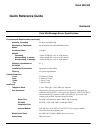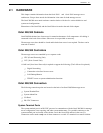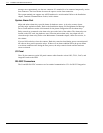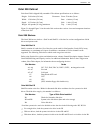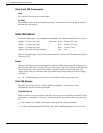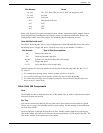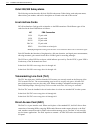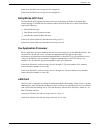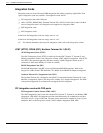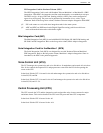
2-2 Installation and Maintenance Volume
Octel 200/300 S.4.1
PB60019−01
message server permanently, use the rear connector. If a terminal is to be connected temporarily, use the
front connector. The front cabinet door must be open to use the front connection.
The system terminal port supports any ASCII send/receive serial terminal. Refer to the Installation
chapter, Terminal Communications section, in this volume.
System Alarm Port
Major and minor alarm relays provide alarms for hardware errors. A dry-relay contact closure
provides major and minor alarms. Refer to the Installation chapter, Pin Assignments for Message
Server Cards and Ports section of this manual for the pinout configuration for the alarm relays.
Relay controls are connected to the alarm relay port at the back of the cabinet. The alarm relays are
located on the CPU card. Any hardware error closes the minor alarm relay. Any alarm call also
closes the major alarm relay. Refer to the Maintenance Commands chapter, Alarm Test section, in
this volume.
If power fails both relays close the contacts. Both relays remain closed during power restoration until
the software boot process opens the relays. If there was an alarm condition before the power failure
or an alarm condition arises during the boot process, the relays remain closed until the hardware
errors are cleared.
I/O Panel
Telco 50-pin connectors on the I/O panel connect cables from the various LICs, TLCs, DACs, and
integration cards to the PBX.
RS-232C Connectors
The J1 and SP1 RS-232C connectors are for terminal communication. J2 is for RS-232 integration.







